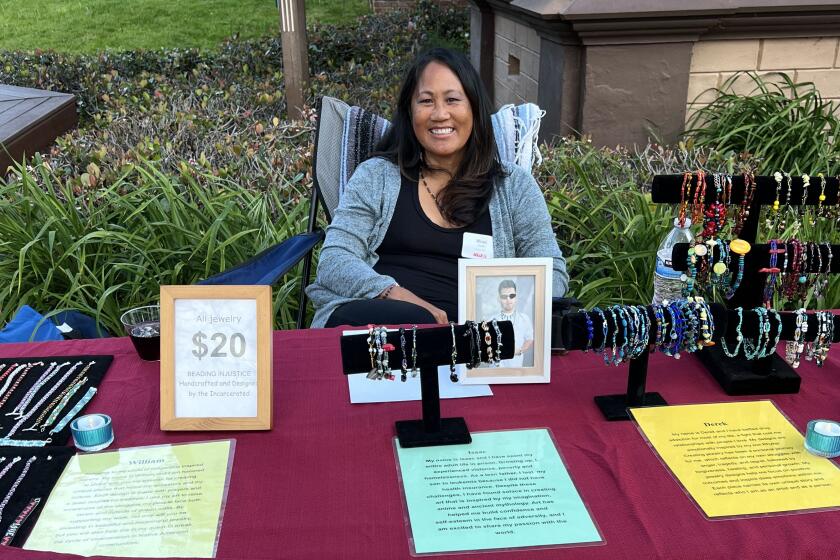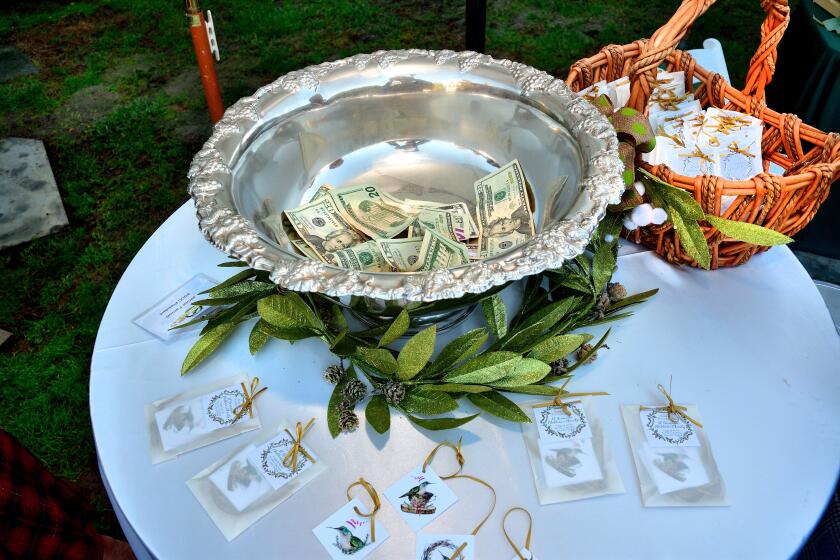Casa de Mañana celebrates 90 years of its Village history in La Jolla
Casa de Mañana, La Jolla’s resort-turned-luxury-living facility, celebrated its 90th anniversary Dec. 10 at 849 Coast Blvd., opening its doors for prospective members to sample food served there, meet staff and mingle with potential new neighbors.
Among the staff to welcome them was Roberta Jacobsen, president of Front Porch Communities, which owns and operates Casa de Mañana. Jacobsen said with the exception of some modern upgrades — indoor plumbing, electricity, room renovations — the building is almost identical to its state in 1924. “Except there were horses parked out front instead of cars,” she joked.
Historic Hotel
Originally a resort hotel, Casa de Mañana was built by Isabel Hopkins and was considered an upscale seaside destination for visitors to San Diego and La Jolla, Jacobsen said. Its original structure, the main building located at 849 Coast Blvd., included several cocktail lounges and a restaurant for guests.
The restaurant, Jacobsen said, was the “upscale place for special occasions,” such as first dates, engagements, wedding receptions and celebrity spotting. Retired teacher Mary Lou Brown, who worked at Casa de Mañana from 1990 to 1995, said legends of who’s who sightings would be passed on from former employees.
One encounter, a particular favorite of hers, came from a waitress decades ago. As the tale goes, the waitress was serving drinks in one of the cocktail lounges (now the lobby-level library) and became so star-struck by a movie star waiting for his drink, she tripped and fell, and eventually found herself under a table. The actor’s name escaped Brown, much to her dismay. However, she did recall that J. Edgar Hoover, former director of the FBI, was also a visitor. A La Jolla Light article dated Sept. 30, 1937 reported his stay. It read: “J. Edgar Hoover, head of the Federal Bureau of Investigation, visited Casa de Mañana for a week with Clyde Tolson and Guy Hattee, all of Washington D.C. They spent most of their time in seclusion at one of the hotel’s cottages and left Friday by plane to Washington. Mr. Hoover expressed himself as highly pleased with the scenic conditions here and the high moral tone of the community, promising to come again.”
A supplementary article reported that British actor Arthur Treacher also visited the hotel. Treacher is best known for his role as The Constable in the 1964 film “Mary Poppins”; and roles in the 1944 film “National Velvet,” starring a young Elizabeth Taylor and Mickey Rooney; and in several Shirley Temple films.
During the 1940s, in midst of World War II, the hotel business was struggling, so Hopkins opened Casa’s doors to U.S. Navy soldiers coming home from combat, operating the hotel as a rest and recuperation center.
Unable to bounce back from the economic downturn, Hopkins sold the hotel for $5 million to Pacific Homes in 1953, which turned the resort into an upscale assisted living community.
Living large
At the time, Pacific Homes was affiliated with the Methodist Church, so many of the cocktail lounges and bars were converted for other purposes. Most notably, one became a library and the other a Methodist chapel — both of which still stand. Jacobsen said residents did not have to be Methodist to live at Casa de Mañana, but chapel services were Methodist.
The La Jolla community originally opposed the change in use. A booklet produced by Pacific Homes chronicling the history of the resort, “Casa de Mañana: The first 20 years,” explained some of the Villagers’ concerns: “1) We had deprived them of the hotel which had been the center of much of their social life, 2) We were a tax-free institution, which removed this property from the tax- producing rolls, and 3) We were indigents replacing wealthy hotel guests whose money benefited the town.”
In its retort, Pacific Homes explains: “We had to admit to the first and second allegations, but erelong the merchants, bankers and brokers realized that the third was a false assumption. Rumor soon had us all millionaires — equally false, but it did lessen resentment. To further good will, Stevenson’s Department store (Walker Scott at the time) sent a car twice a day to take us to the shopping center. We, in turn, served in such local organizations as Red Cross, Thrift Shop, Visiting Nurses and (La Jolla) Woman’s Club, and in the churches. During the first five years, we also promoted the fund drives for various philanthropic groups. When the number of such appeals had reached eight (and was rapidly growing), we cut back to one for which the (Casa de Mañana) Club collected — the United Crusade — with permission to the Red Cross to have one of our members accept contributions for it. Finally, resentment toward us died, and we were accepted as an integral part of La Jolla.”
Ever expanding, ever changing
As adjoining properties became available, Pacific Homes acquired them to expand Casa de Mañana. In 1965, six “Loma” cottages were opened and quickly occupied. In late 1967, Casa de Mañana held a groundbreaking ceremony for what would be the Riviera Cottages.
Further, after “numerous delays,” according to “The first 20 years,” permits to construct the Villa de Este were granted in 1972 and the two buildings that make up the Villa were built in 1973, which marked “the most exciting event of this five-year period (1968-1973).”
In late 1987, Casa de Mañana was added to San Diego’s list of designated Historic Landmarks. In 1999, Pacific Homes merged with three other not-for-profit organizations to form what is now Front Porch Communities. No longer affiliated with the Methodist Church, Front Porch Communities operates Casa de Mañana to this day and there is no religious association.
Despite several renovations to the interior — converting hotel rooms into living quarters and upgrades as needed — much of the exterior has not changed, Jacobsen said, honoring its historical designation. The only major change took place around 15 years ago, she said, when some old units were torn down and rebuilt.
Today, Casa de Mañana spans five acres and has accommodations for 200 residents, although Jacobsen proudly noted the facility is at almost 100 percent capacity.
Still got that feeling
For Marti Kranzberg, the fact that Casa de Mañana looks the same as it did decades ago is part of the appeal, and why she said she wants to “end her days” there.
“I moved to San Diego in 1979 and when I did my initial walk along the waterfront in La Jolla, I came across Casa de Mañana. I just became enamored with this place,” she said at the 90th anniversary celebration. When a friend moved there, she saw that the place hadn’t changed, and decided she wants to retire there.
“I’m not a La Jolla resident now, I am a potential La Jolla resident, if my dreams were to come true and I could move here (to Casa de Mañana),” she said. “I just love the view, the community involvement and the people.”
For information about Casa de Mañana, visit frontporch.net or casademanana.org




